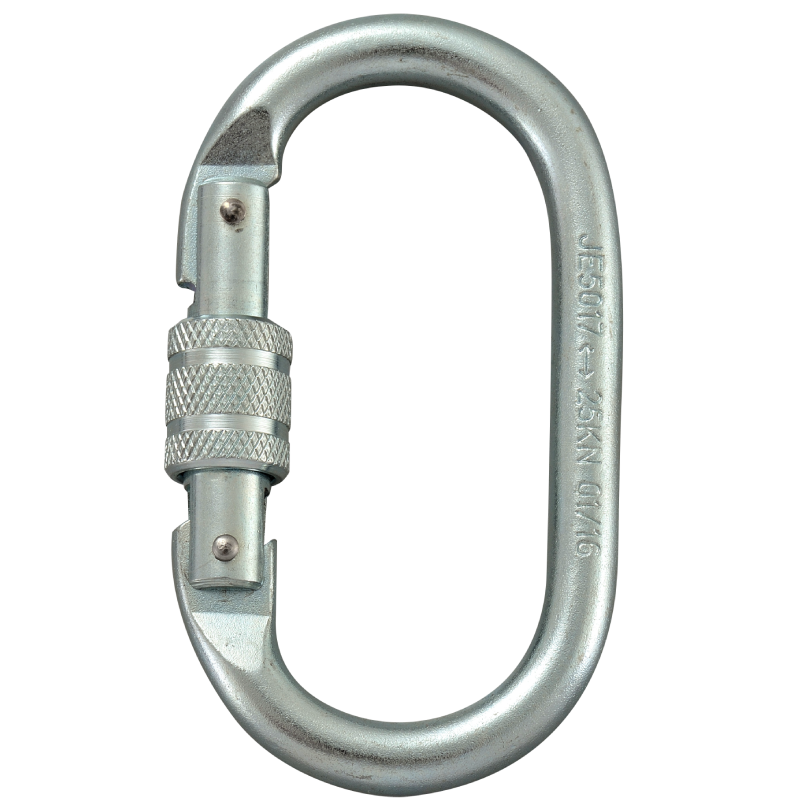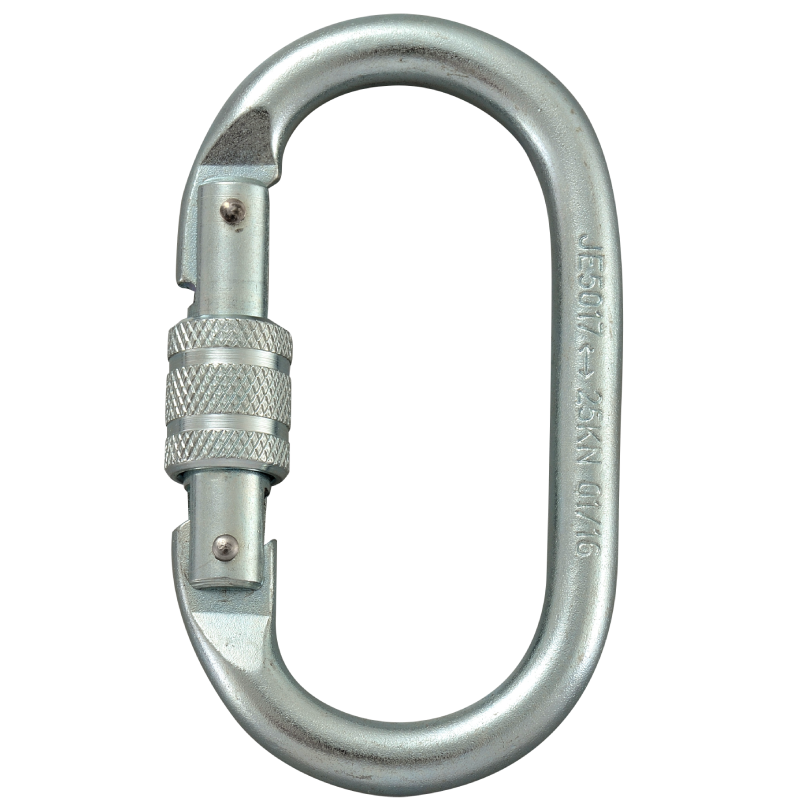UFO SPACE
Oval Carabiner Steel Opening 19 mm Fall Protection Anchor | UFO
Oval Carabiner Steel Opening 19 mm Fall Protection Anchor | UFO
Couldn't load pickup availability
Oval 25Kn carabiner, 19mm opening in UFO anti-fall steel
These carabiners are designed for use with this braking knot. They allow the knot to be turned thanks to the more or less symmetrical shape and the large width of the carabiner.
Symmetrical shape means that the tangents to the curves of the small and large widths are parallel or nearly so, the curve of the large side is very small or non-existent. A half capstan will always slip on a rope stress of 2.5 Kn.
The shape of a symmetrical carabiner makes it a very good device carabiner: the ropes are not thrown at an angle but remain in the middle of the wide side with the same pressure as they pass through the used brake. For abseiling or belaying.
The 25Kn oval carabiner is designed for dynamic use, where it is one of the active elements of the brake used. It is not designed for load application.
Oval carabiner, 19mm opening, CE EN362:2004, weight 0.175 Kg
The essentials of carabiners:
The carabiner is an essential part of any vertical climbing equipment. It is very strong when used correctly, but can break or open when used incorrectly. Understanding the strengths and weaknesses of carabiners will allow the user to make the most appropriate choice for each use.
Symmetrical:
they are almost oval in shape with the finger parallel to the axis of the carabiner body. They combine good strength with the ease of use of a pulley (tow). This symmetrical shape also makes it easier to turn the carabiner in the anchor if needed.
Thus, a carabiner should have: a breaking load of 2200-3000 kg when the finger is closed, a breaking load of 700-1000 kg when the finger is open, a breaking load of 800-1100 kg for the small pin .
Exchange between the ease of opening of a carabiner and the safety of locking
A secure lock limits the likelihood of inadvertent opening during use.
The most secure lock is a tool-tightened connection, with almost zero probability of accidental opening. However, such interlocking is not suitable for efficient field handling.
Ease of opening (ergonomics) allows quick and efficient connection and disconnection. In some situations, this contributes to user safety as much as the safety of the lock.
This compromise must be fine-tuned, the user must choose what is appropriate for each type of practice. The remaining pages of this document provide details, use by use, to assist you in making this choice.
How to use carabiners correctly and adopt good practices
A carabiner is designed to work on the long axis with the finger closed and the ring locked. Only the resistance value on the long axis with the finger closed is suitable for the stresses that a carabiner can undergo in vertical practices. Engaging a carabiner in any other way can be dangerous.
Three good practices:
1. Choose the right equipment:
Ensure that the carabiner chosen is suitable for the intended use and that it is compatible with the connected equipment, use support accessories to assist in correct positioning.
2. Position the carabiner correctly when installing it
Whether on a harness or anchor, on a descender or at the end of a lanyard, it is at the time of installation that the user must ensure that the carabiner is positioned and closed correctly.
3. Check the carabiner during use
Carabiners move during use, being pulled by the rope, rubbing against the rock, vibrating as you walk. Regularly check that this does not change its position in a dangerous way and that the ring remains tightly screwed despite the vibrations.
Approval
- Oval carabiner with screw safety lock,
- 177Gr,
- 19mm aperture,
- resistance 25Kn,
- CE EN362:2004
Share


